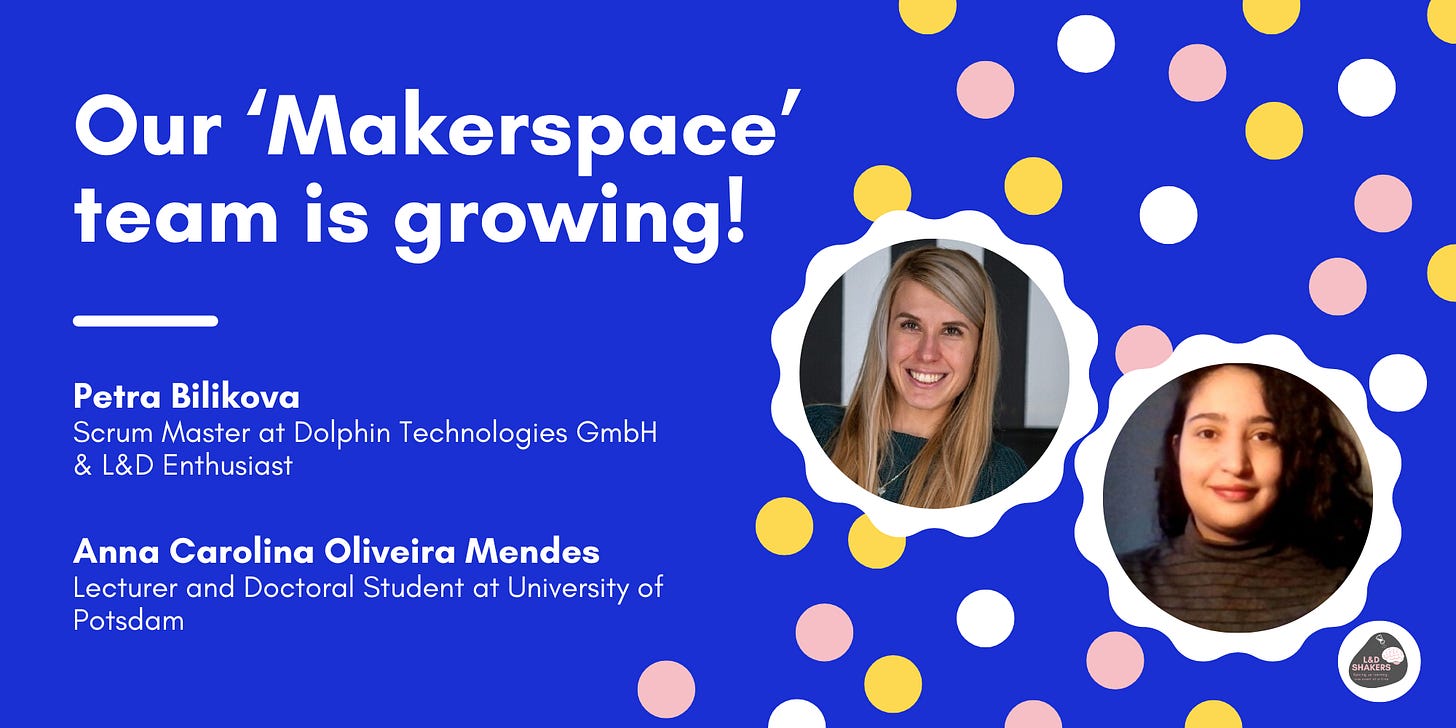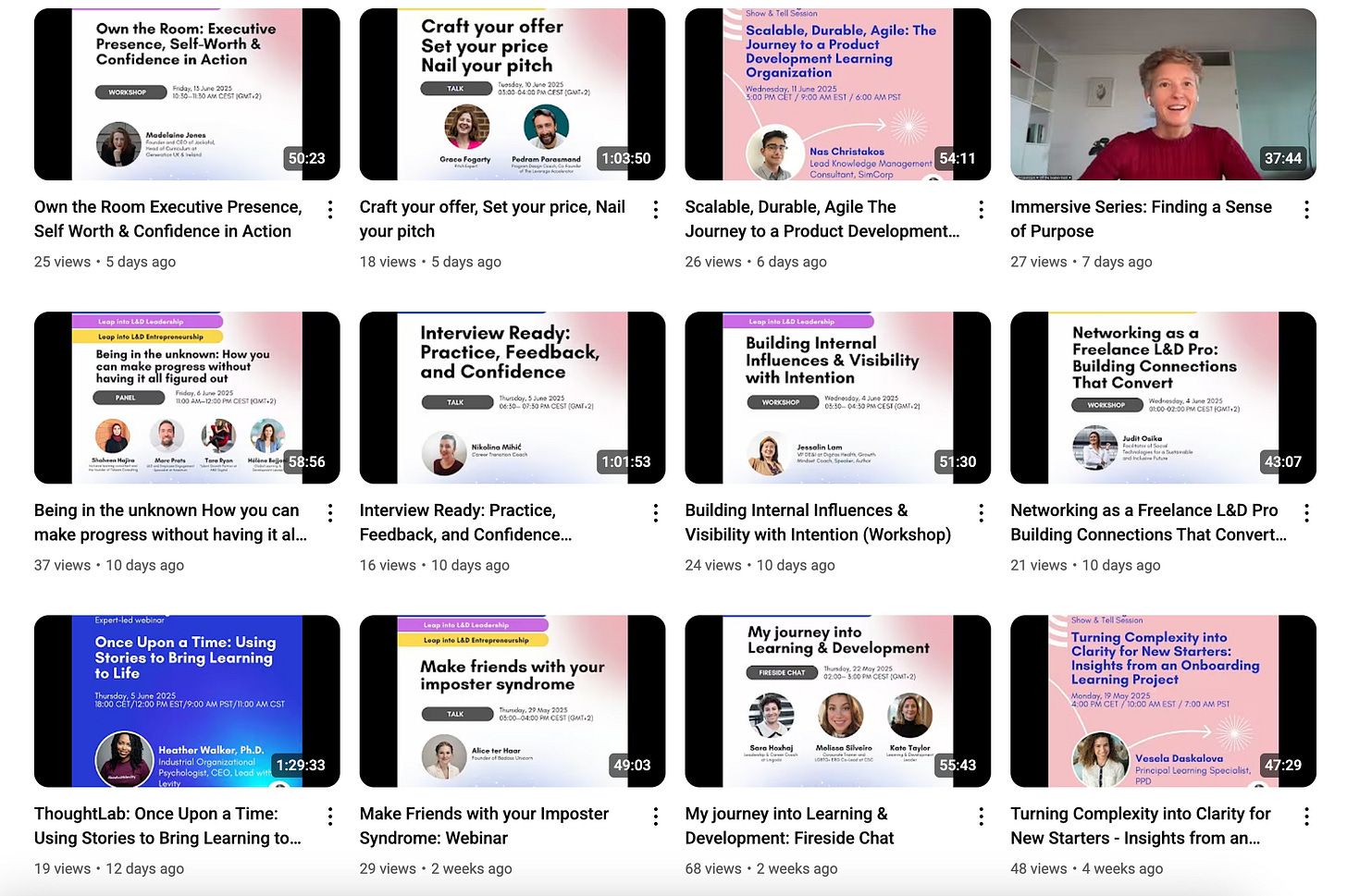TLB #53🧠 How to shift from a cost-centre to a must-have business function
A bi-weekly inside scoop on all the hottest events, juicy discussions, and oh-so-many other exciting things happening in our dynamic L&D community. 🧡
Hello Shaker,
Here’s all that you’ll experience in today’s issue:
💡Learning Bites: The real reason business leaders don’t buy into L&D – how to shift from a cost-centre to a must-have business function.
🗓️ Community Calendar: Be part of local hub meet-ups, book club and other events happening in the Shakers Community
🖌️ Community Creations: Tune into Unscripted for the latest episodes, Welcome new Core Team members and binge-watch L&D Shakers’ YouTube Channel
🔖 Resource Reel: A collection of resources on Facilitation, AI, Workplace Trends and many more.
Learning Bites 💡
The LinkedIn Workplace Learning Report 2024 outlines two clear priorities for L&D professionals navigating today’s shifting business landscape:
Priority 1: Lean into analytics - For the second year in a row, aligning learning programs to business strategies tops the list of focus areas. It’s no surprise, then, that L&D pros are sharpening their data literacy and aiming to speak the language of the business.
Priority 2: Build the right metrics - Aligning learning to business outcomes is still a new muscle for many L&D teams. While some remain focused on “vanity metrics” like employee satisfaction or the number of trainings delivered, forward-thinking teams are starting small, testing experiments that link learning to real business priorities. Among those who do track business outcomes, productivity and performance top the list.
These priorities point to a growing awareness in the field, but awareness isn’t always enough to drive change. Which brings us to…
Part 1: Why L&D Sometimes Struggles to Earn a Seat at the Table
1. L&D is framed as a cost, not an investment
L&D teams often measure success using participation metrics — completion rates, hours spent, or learner feedback. While useful internally, these numbers don’t necessarily connect to business value.
Business leaders typically ask:
“How does this influence sales, efficiency, retention, or growth?”
They’re looking for signals of impact, not just engagement.
If learning initiatives aren't tied to the metrics leaders care about, L&D may unintentionally remain in the “nice-to-have” bucket.
2. Solutions are not tied to strategic priorities
Too often, learning programs are created without fully aligning to immediate business needs like hitting revenue targets, supporting change initiatives, or retaining key talent.
The more clearly learning supports strategic execution, the more leaders will see it as essential, not optional.
3. Focus on inputs instead of outcomes
Traditional learning teams emphasise inputs: course completion, hours logged, and content delivered. Meanwhile, leaders care about business outcomes like:
Faster time to productivity
Improved team performance
Increased sales conversion
Without outcome-oriented metrics, it’s hard for L&D to demonstrate return on time and investment.
4. Generic learning that misses business context
One-size-fits-all content may be easy to scale, but it often fails to address the real challenges people face on the ground, especially in fast-moving or high-pressure environments.
When learning feels too theoretical or disconnected from business realities, leaders disengage. But when L&D becomes a problem-solving partner, it earns trust and attention.
Part 2: How L&D Can Shift to a Must-Have Business Function
Let’s look at how L&D teams can move beyond content creation to capability building and start shaping business outcomes.
1. Use proxy metrics (Leading Indicators)
Directly measuring ROI from learning is ideal, but not always feasible. Proxy metrics help bridge that gap by tracking behaviours known to drive performance.
Business Goal Proxy Metric via L&D
Customer retention Empathy scores, or CX feedback
Sales conversion % of reps using the updated pitch
Operational efficiency Confidence in process adherence
Leadership pipeline Readiness ratings or succession coverage
🧠 Tip: Ask early — what do we want to shift, and how will we know it’s working?
2. Combine perception + performance metrics
Relying solely on participant feedback limits your insight. Blend perception with observable behaviour, for example:
Self-reports (“I now feel confident handling objections”)
Manager observations (“I’ve seen her use that technique in client meetings”)
🧠 Tip: Add structured check-ins (30/60/90 days) to measure sustained change.
3. Track learning transfer
Learning isn't useful if it stays in the classroom. Use simple tools to assess whether skills are being applied:
Quick pulse surveys
Peer or manager check-ins
Post-program reflections tied to real tasks
This adds depth to your measurement without heavy data lifting.
4. Close the loop with stakeholders
Bring business stakeholders into the conversation before and after programs:
Ask: What would success look like?
Gather: Observations of change, impact stories, operational shifts
Stakeholder quotes and narratives lend credibility to your learning stories.
5. Tell business-aligned stories
Where hard numbers aren’t available, connect the dots with logic and observation, for example:
“Before the workshop, Team A struggled with cross-functional handoffs. After a series of targeted sessions, they implemented clearer ownership rituals. Their manager reports fewer escalations and faster turnaround.”
Good storytelling helps you surface value that’s real, even if it’s not yet quantifiable.
6. Partner with People Analytics
If your org tracks engagement, mobility, or retention, connect those dots:
Do high-performing teams also engage deeply in learning?
Did internal promotions follow development investments?
Did retention improve after manager capability building?
These correlations build a compelling case over time, especially when conveyed with stories and qualitative data.
7. Co-design with leaders
When leaders help define the problem, they’re more likely to believe in the solution.
Run short discovery interviews
Facilitate co-creation sessions
Align learning goals to what keeps them up at night
This builds shared ownership and deeper accountability.
8. Activate managers as learning multipliers
Your programs don’t end in the classroom — they’re extended (or lost) in daily work.
Equip managers to:
Reinforce key behaviours
Give feedback tied to learning
Coach in the flow of real work
When managers support application, learning becomes performance.
Evidence vs. Proof — and Why Both Matter
Business leaders may want proof of ROI in some cases, but more often, they need evidence that the learning investment is shifting the right levers: performance, agility, readiness, or decision-making.
If you can’t provide all the numbers
Use data where you have it
Layer in behavioural evidence where ROI is hard to extract
Add stories and stakeholder perception to make it human
This mix can earn credibility, trust, and a seat at the table.
Coming Up Next
Community Calendar 🗓️
Growth. Connection. A-ha moments.
Discover what’s coming up—from thoughtful conversations in local circles to dynamic community gatherings that stretch your thinking.
All curated by your L&D Shakers crew.
Community Creations 🖌️
Big news from the Makerspace!
Our doing squad is growing, and we’re thrilled to welcome two brilliant new Core Team members, Petra Bilikova and Anna Carolina. Both Petra and Anna are already diving into upcoming challenges—and we’re lucky to have their energy and expertise on board!
What’s the Makerspace again?
Launched by Supriya Harikumar, the Makerspace is our hands-on learning lab—built around monthly sprints where Shakers create real things, apply theory, build portfolios, and learn by doing.
Each sprint includes:
📌 A design brief
🎤 A kick-off session
🎯 A final showcase with peer feedback
Curious to get involved? Learn more and join the next sprint in #3-shakers-makerspace.
🎧 Two fresh conversations just landed on L&D Frameworks: Applied, and they’re packed with practical wisdom and creative inspiration.
🎙️ Episode 1: Matt Smolen on Storytelling & Trojan-Horse Learning
Matt shares how Specsavers and Boost Juice are using storytelling to bring learning to life—and sneak it into content in ways that actually stick.
🔍 Highlights:
Using narrative to make learning more engaging
“Trojan-horsing” learning into everyday content
Boost Juice’s Olympic-style recognition program
🎙️ Episode 2: Gabrielle Sun on Blending ADDIE & SAM
Gabrielle takes us behind the scenes of her global L&D team’s iterative approach, combining structure and agility to stay aligned and move fast.
🔍 Highlights:
Hybrid ADDIE + SAM in action
Navigating Pre-Alpha → Alpha → Beta → Gold stages
Collaborating better with SMEs on complex projects
Thanks again to Joost for curating these powerful episodes! 🙌
🎧 Tune in on Spotify or Apple Podcasts—and bring fresh energy to your next learning project.
Missed a recent L&D Shakers event? Want to revisit your favourite moments? Head over to the L&D Shakers YouTube channel to explore recordings from community events, panel discussions, and workshops.
You’ll also find select sessions from the ongoing Career Leap program—perfect if you’re looking for inspiration, clarity, or next steps in your L&D journey. 🤸🏻♀️
Hit subscribe, and binge-watch your way to better learning!
Cool Stuff You Don’t Wanna Miss Out
2025 HR Investments & Budget Insights for CHROs – Gartner’s latest benchmarks reveal L&D is the #1 area slated for increased investment in 2025, positioning it as a critical lever for AI readiness, reskilling, and leadership development.
9 Future of Work Trends for 2025 – Gartner has released a practical toolkit exploring nine key trends shaping the workforce in 2025, with actionable insights and tools to help HR leaders navigate shifting talent needs.
AI Fluency: Frameworks and Foundations – Anthropic's new free course offers a deep dive into AI collaboration, equipping professionals with a 12-lesson framework that goes beyond basic prompts to fundamentally rewire how we work with AI.
Workshops & Wizards Facilitation Deck – SessionLab’s free 22-card deck offers a playful and reflective toolkit for facilitators, trainers, and learning designers to build their mindset, deepen group dynamics, and enhance collaboration.
How to Attract, Develop, and Retain AI Talent – A practical guide for talent leaders navigating the AI talent crunch, offering four essential strategies to find, engage, and retain in-demand AI professionals.
Why Can't L&D Get a “Seat at the Table”? – Jess Almlie challenges L&D pros to shift from frustration to influence, sharing bold advice on how to lead with value and earn strategic visibility.
〜See you soon
Till then, keep spicing up your learning! 🧠🧂
Sejaal







